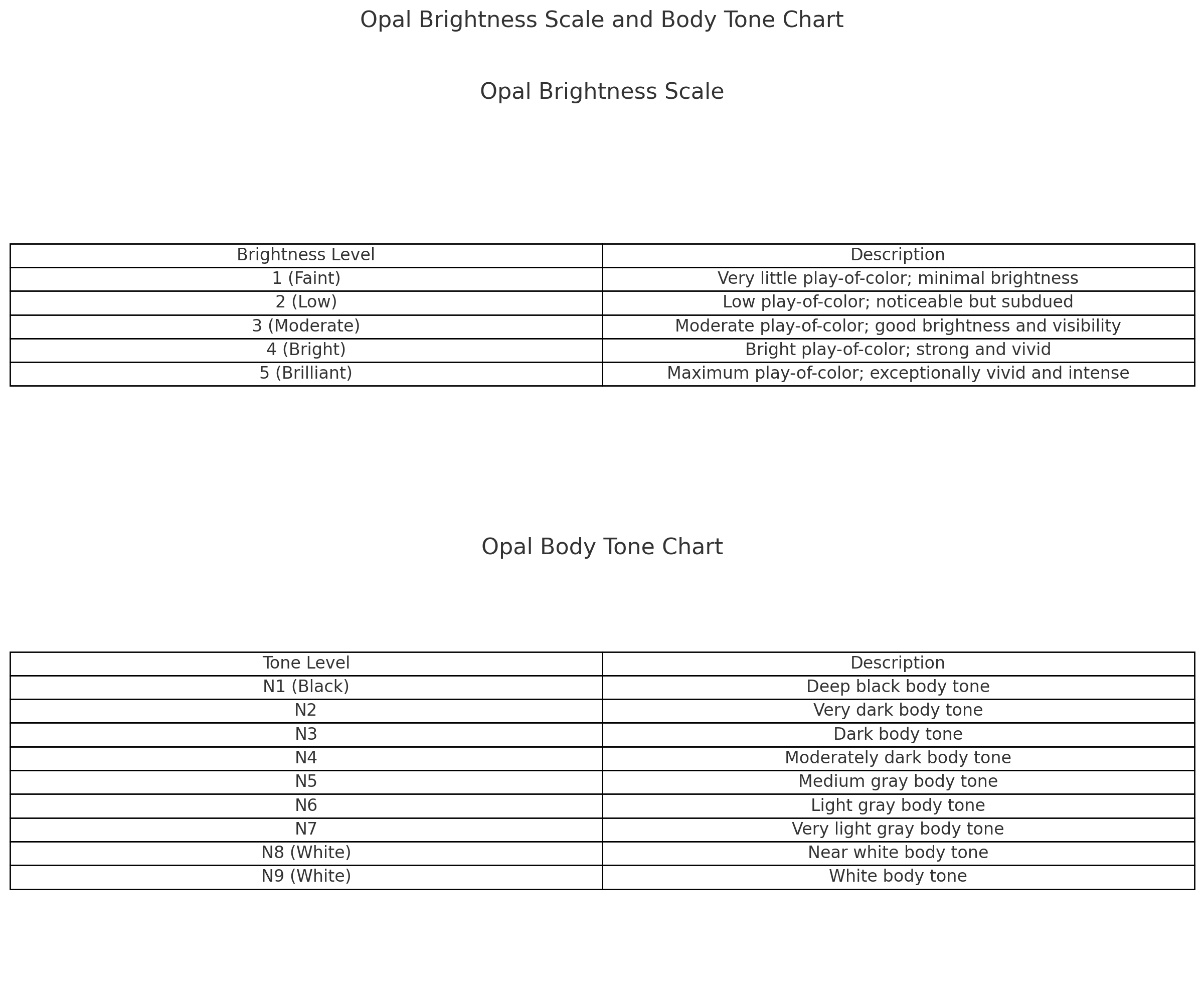
Understanding Opal Brightness and Body Tone: A Comprehensive Guide

Opals are one of the most mesmerizing gemstones, renowned for their unique play-of-color and intricate beauty. To truly appreciate and evaluate these gems, it's essential to understand two critical aspects: opal brightness and body tone. In this blog, we will delve into these concepts, providing you with a clear understanding of what makes opals so special.
What is Opal Brightness?
Opal brightness refers to the intensity of the play-of-color displayed by the gem. This phenomenon occurs when light interacts with the silica spheres within the opal, causing it to flash an array of colors. The brightness of an opal can significantly affect its value and appeal. Here's a breakdown of the opal brightness scale:
What is Opal Brightness?
Opal brightness refers to the intensity of the play-of-color displayed by the gem. This phenomenon occurs when light interacts with the silica spheres within the opal, causing it to flash an array of colors. The brightness of an opal can significantly affect its value and appeal. Here's a breakdown of the opal brightness scale:
1 (Faint): Very little play-of-color; minimal brightness.
2 (Low): Low play-of-color; noticeable but subdued.
3 (Moderate): Moderate play-of-color; good brightness and visibility.
4 (Bright): Bright play-of-color; strong and vivid.
5 (Brilliant): Maximum play-of-color; exceptionally vivid and intense.
Understanding the brightness scale is crucial when selecting an opal, as it directly impacts the gem's visual impact and overall allure.
What is Body Tone?
Body tone refers to the underlying color of the opal, ranging from black to white. The body tone can influence the appearance of the play-of-color and is a vital factor in determining the type and value of the opal. Here's a detailed look at the body tone chart:
N1 (Black): Deep black body tone.
N2: Very dark body tone.
N3: Dark body tone.
N4: Moderately dark body tone.
N5: Medium gray body tone.
N6: Light gray body tone.
N7: Very light gray body tone.
N8 (White): Near white body tone.
N9 (White): White body tone.
Opals with darker body tones, such as N1 to N4, are often more valuable due to the stark contrast they provide to the play-of-color. Conversely, lighter body tones like N8 and N9 are more subtle but equally captivating.
The Importance of Opal Brightness and Body Tone
When selecting an opal, both brightness and body tone should be considered to ensure you choose a gem that meets your aesthetic preferences and investment criteria. Bright opals with a high level of play-of-color are generally more desirable, while the body tone can influence the overall look and feel of the gemstone.
Conclusion
Understanding opal brightness and body tone is essential for anyone looking to purchase or appreciate these stunning gems. Whether you're a collector, a jeweler, or simply an admirer of opals, having a clear grasp of these concepts will enhance your ability to evaluate and enjoy these natural wonders.
For those interested in exploring more about opals or looking for the perfect gem, remember that the interplay between brightness and body tone is what truly brings an opal to life. Keep these factors in mind, and you'll be well on your way to finding an opal that dazzles and delights.

